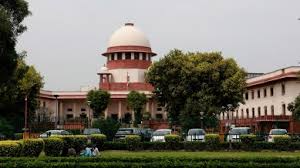In a first, SC comes out with roster specifying post-wise quota for SC, ST staff

New Delhi, July 2, 2025 — In a historic shift toward inclusion and accountability, the Supreme Court of India has, for the first time, released a post-based reservation roster for Scheduled Castes (SC) and Scheduled Tribes (ST) in its staff appointments. The new system ensures fair representation and adds transparency to the top court’s internal hiring practices.
The published roster details the number of reserved posts for SC and ST employees across non-judicial roles. These include positions like court clerks, assistants, drivers, and other administrative roles.
A Significant Step Forward
Until now, the Supreme Court had not shared a structured reservation plan for its internal staff. Government bodies across India follow post-based quotas, but the judiciary has long remained outside this practice.
This change marks a turning point. The court has aligned itself with constitutional mandates on affirmative action, specifically under Articles 16(4) and 335. It’s a move that reinforces the principle of equality in public institutions.
Clear Guidelines in the New Roster
The released document provides a clear breakdown of reserved positions by role and category. Earlier, reservations were applied without transparency. Now, the new system:
- Lists total sanctioned posts in each department
- Clearly assigns quotas to SC and ST categories
- Applies the quota to both recruitment and promotion
- Tracks available and vacant reserved positions
These updates remove confusion. They also allow employees and applicants to monitor reservation implementation.
Why Now? The Legal Background
This decision comes nearly two decades after the Supreme Court’s own ruling in the M. Nagraj v. Union of India case (2006). In that case, the court allowed reservation in promotions but asked governments to show data on backwardness and representation.
Despite that judgment, the court itself didn’t apply these rules to its internal staff. The release of this roster shows a new commitment to those legal standards. It also follows up on the Jarnail Singh case (2018), which eased some restrictions on promotions for SC/ST staff.
Legal Experts and Social Voices React
The move has drawn wide praise. Justice A.K. Sikri (Retd.) called it “long overdue” and said the judiciary should lead by example. “Equal opportunity must begin at the top,” he added.
Social justice advocates also welcomed the change. Rajesh Gautam, a Dalit rights activist, said, “The court has finally acknowledged the need for transparency in its own house.”
Some experts, however, pointed out the need for broader reforms. “This is a good beginning, but real inclusion also means improving diversity among judges,” said Professor Meena Menon, a constitutional law expert.
Setting a New Benchmark
The Supreme Court’s action may prompt other courts to follow. High Courts and subordinate courts employ thousands of staff. If they adopt similar post-based systems, it could lead to a systemic improvement in representation across the judiciary.
The move also addresses growing concern over the lack of SC/ST presence in judicial institutions. A 2023 report found that fewer than 3% of High Court judges belonged to SC communities, and under 1% to ST groups.
By introducing this staff quota, the Supreme Court is taking a first step toward restoring balance.
Ensuring Proper Implementation
While the new policy is promising, much depends on its execution. Experts suggest several measures to ensure success:
- Conduct regular audits
- Create grievance redressal systems
- Run training and outreach programs for SC/ST applicants
- Ensure a discrimination-free work environment
One court employee said, “It’s encouraging to see this change. But we need systems to ensure the reserved posts don’t stay vacant or go unfilled.”
A Turning Point in Judicial Accountability
The Supreme Court’s decision strengthens its moral position on equality. It shows the court is not just interpreting the Constitution — it is also practicing what it preaches.
This move might not resolve all representation issues in the judiciary, but it is an important start. With clear quotas, open documentation, and fair promotion practices, the court sets a standard for other institutions.
Now, the focus must shift to consistent follow-through. Only then will this change lead to genuine inclusion.






